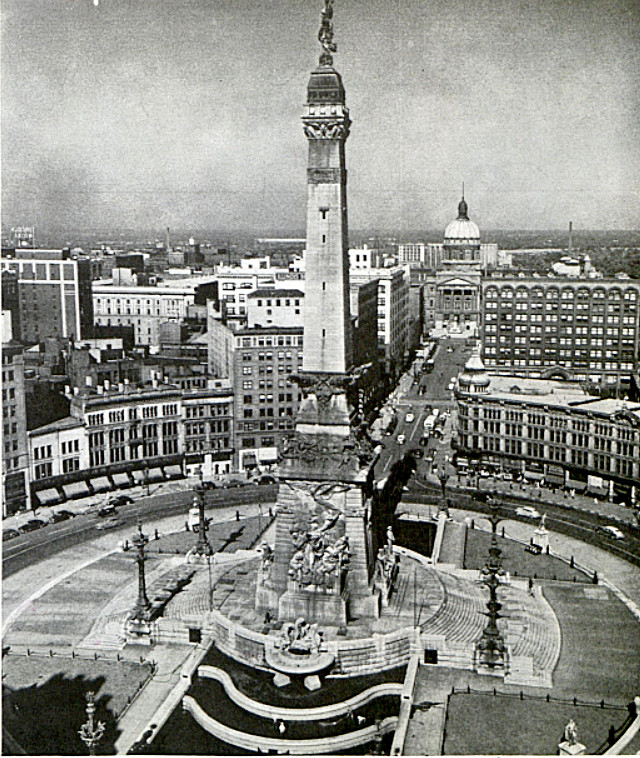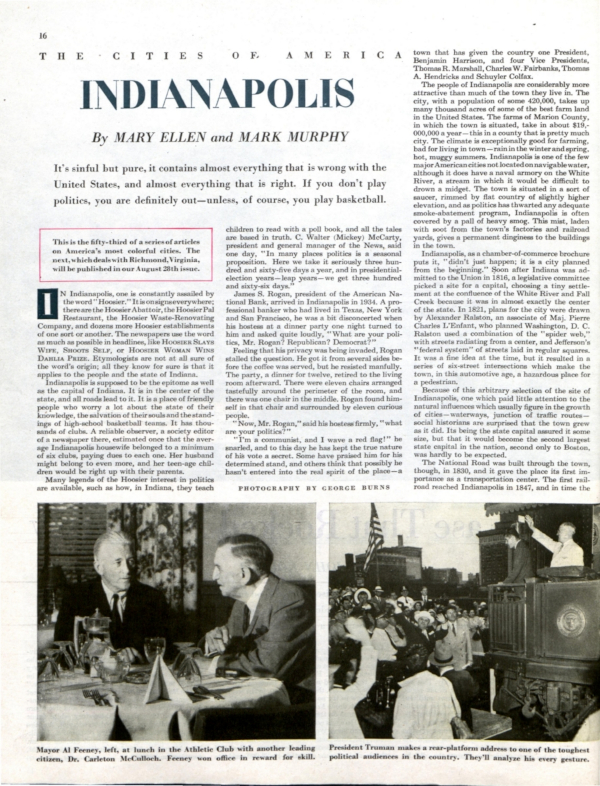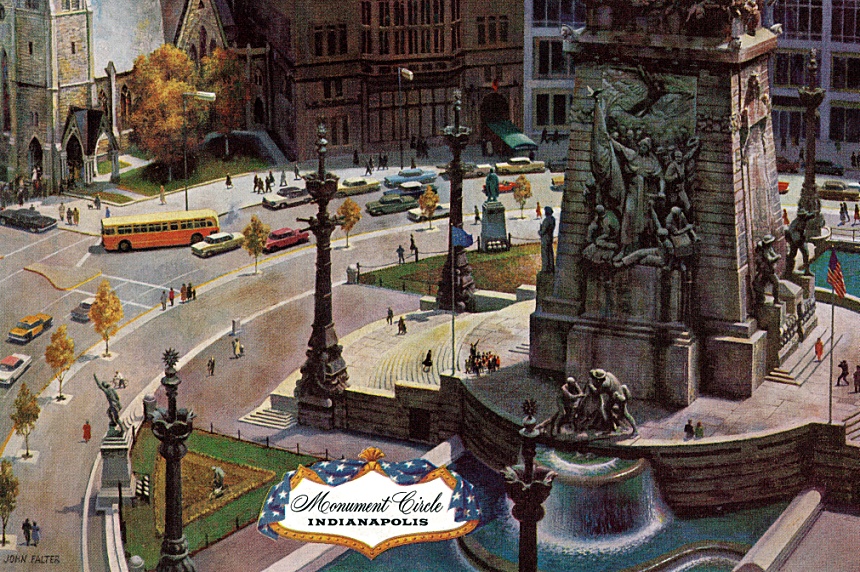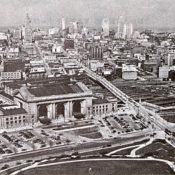In 1945, The Saturday Evening Post began publishing profiles of the major cities in America, highlighting each city’s attractions and unique character. The war was ending, and it was time to turn the nation’s attention to her own backyard. Some of the features hint at problems, but most are brimming in anticipation of living in a modern era free from war and sacrifice.
In 1948, Indianapolis was the second largest state capital, behind only Boston, but it was no Shangri-La. The city had issues with squalid living conditions, smog, and racial tensions. As has always been the case with Midwesterners, the residents had a pretty clear-eyed view of their hometown. In a profile that appeared in the Post in August of 1948, the authors wrote that “When [journalist] John Gunther called Indianapolis the dirtiest town inside U.S.A., there were not the howls from citizenry that one would have expected. Residents said they had been complaining all along about how dirty the town was.”
That’s not to say the citizens weren’t proud; they knew exactly what they were proud of: The Soldiers & Sailors Monument, The Indy 500, and, of course, basketball.
The Soldiers & Sailors Monument marks the center of the city. Completed in 1901, “Visitors are occasionally startled by the monument, seeing in it American Victorian tastes gone absolutely wild, but they can get to like it.”

The Indy 500 was a big deal from its very first running in 1911, and its allure certainly hadn’t diminished by 1948, when an estimated 150,000 went to the race. The article notes that
The people who attend the race go there year after year. It gets in their blood, and the more knowledgeable among them pay little attention to the outcome. They spend their time betting among themselves on the winners of various laps. People take great amounts of beer, and gin in vacuum bottles, for aid in watching the four-hour run, and for about a day afterward police are collecting persons from alleyways, streets and the backs of cars.
Indy had always been a car town. In the early days of the automobile, it was the birthplace of dozens of manufacturers: “Many of the early automobiles were built there — among them the Overland, National, Marmon, Premier, Stutz, Dusenberg, Cole, American, Monroe and Frontenac.” Sadly, by 1948, the era of boutique car makers had passed, but Indy still claims that the very first one was created there, in 1891, when Charles H. Black built a motorized vehicle from a Benz internal combustion engine mounted on a buggy.
Finally, there is basketball, in the beginning, is now, and ever shall be. The authors observed that the three things that worried Hoosiers the most were the state of their knowledge, the salvation of their souls, and the standings of high-school basketball teams: “One observer, dead serious, said, ‘You know, we are an unusually unhomogeneous city. I suppose that the only thing that really holds us together is basketball.’”

Featured image: Saturday Evening Post cover by John Falter from October 28, 1961, of Monument Circle in Indianapolis, Indiana (©SEPS)
Become a Saturday Evening Post member and enjoy unlimited access. Subscribe now


Comments
Very dirty? You don’t get out much do you Carlton. You probably are just butt hurt that there isn’t a Trumplican running the City.
Unfortunately, Indianapolis is still a very dirty city. I wish our current mayor and city govern-ment would face that fact and begin a campaign to clean it up. Indy draws many conventions and has much to offer. We should take pride in our city.